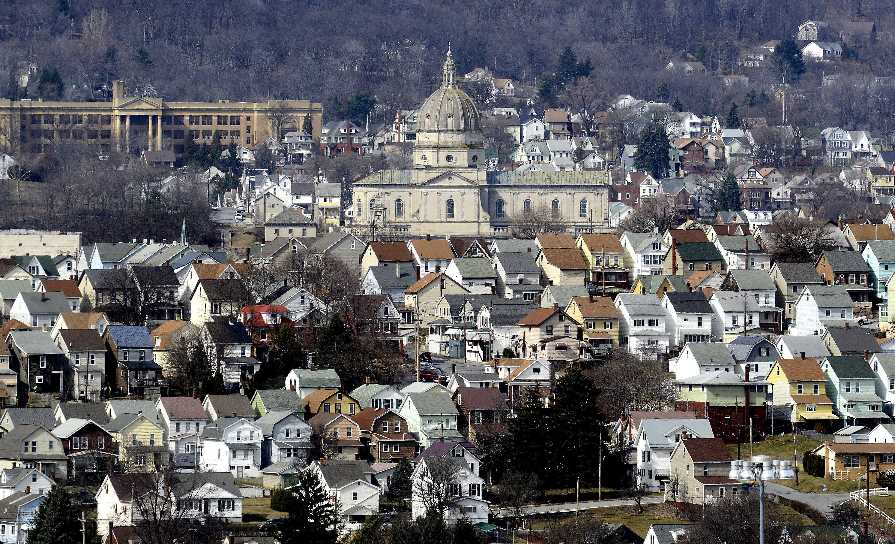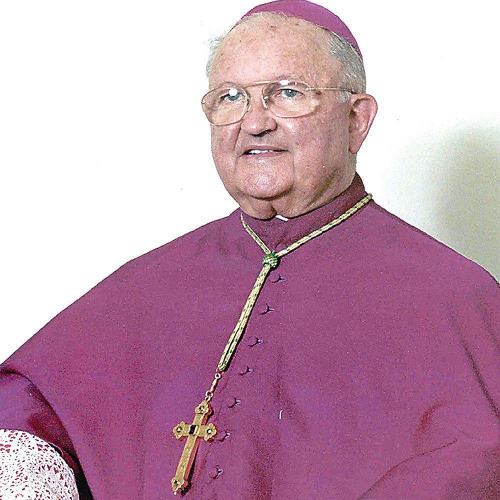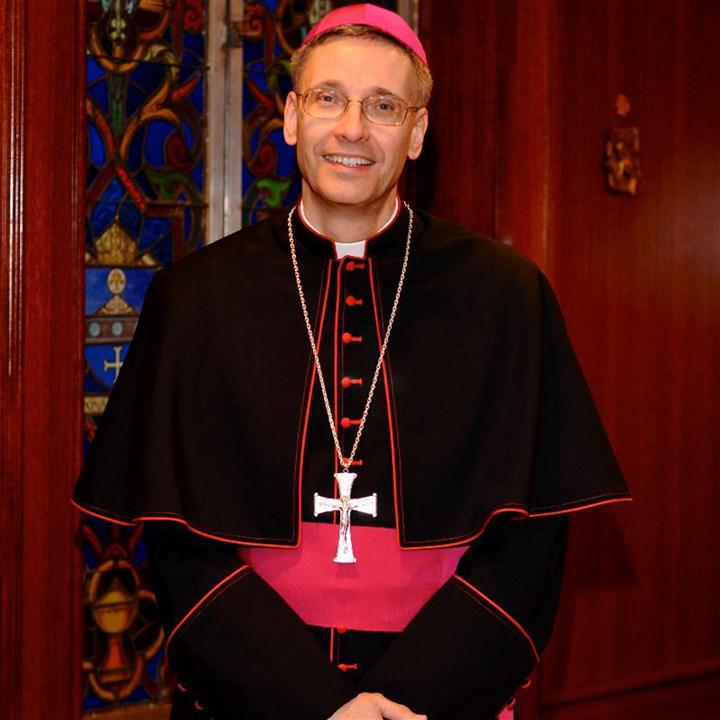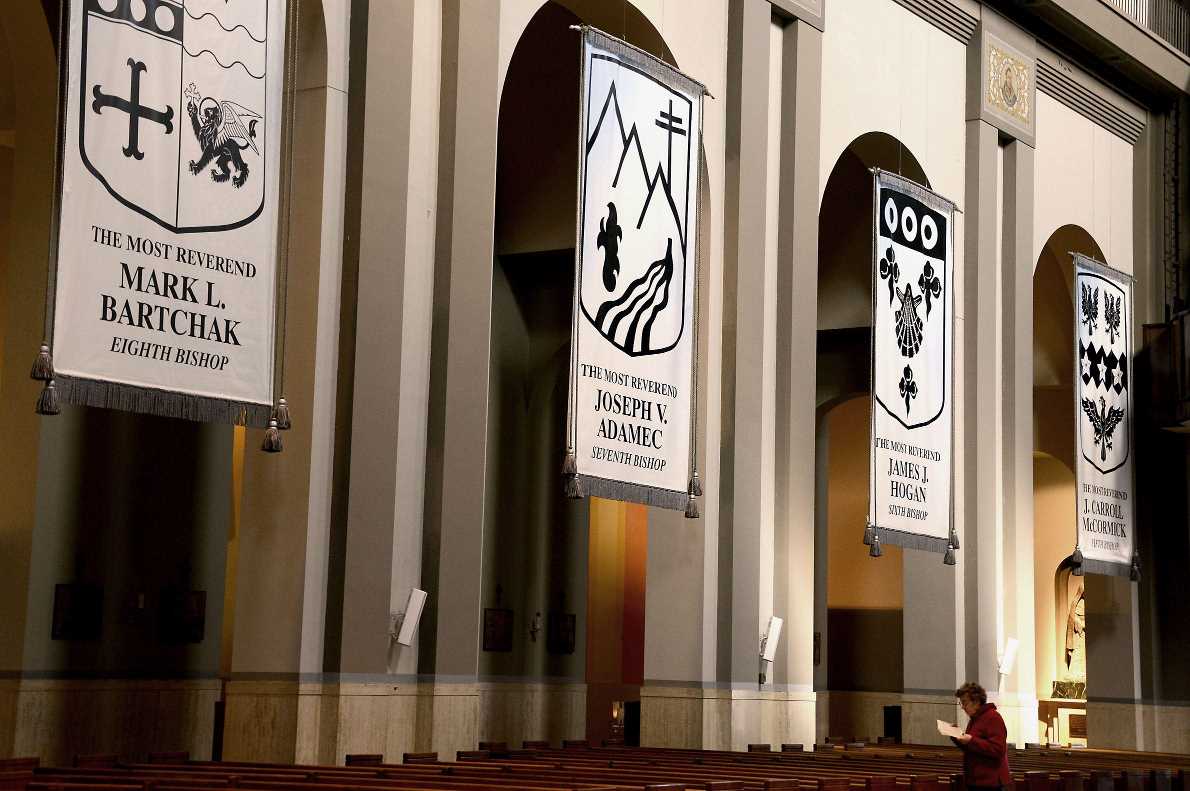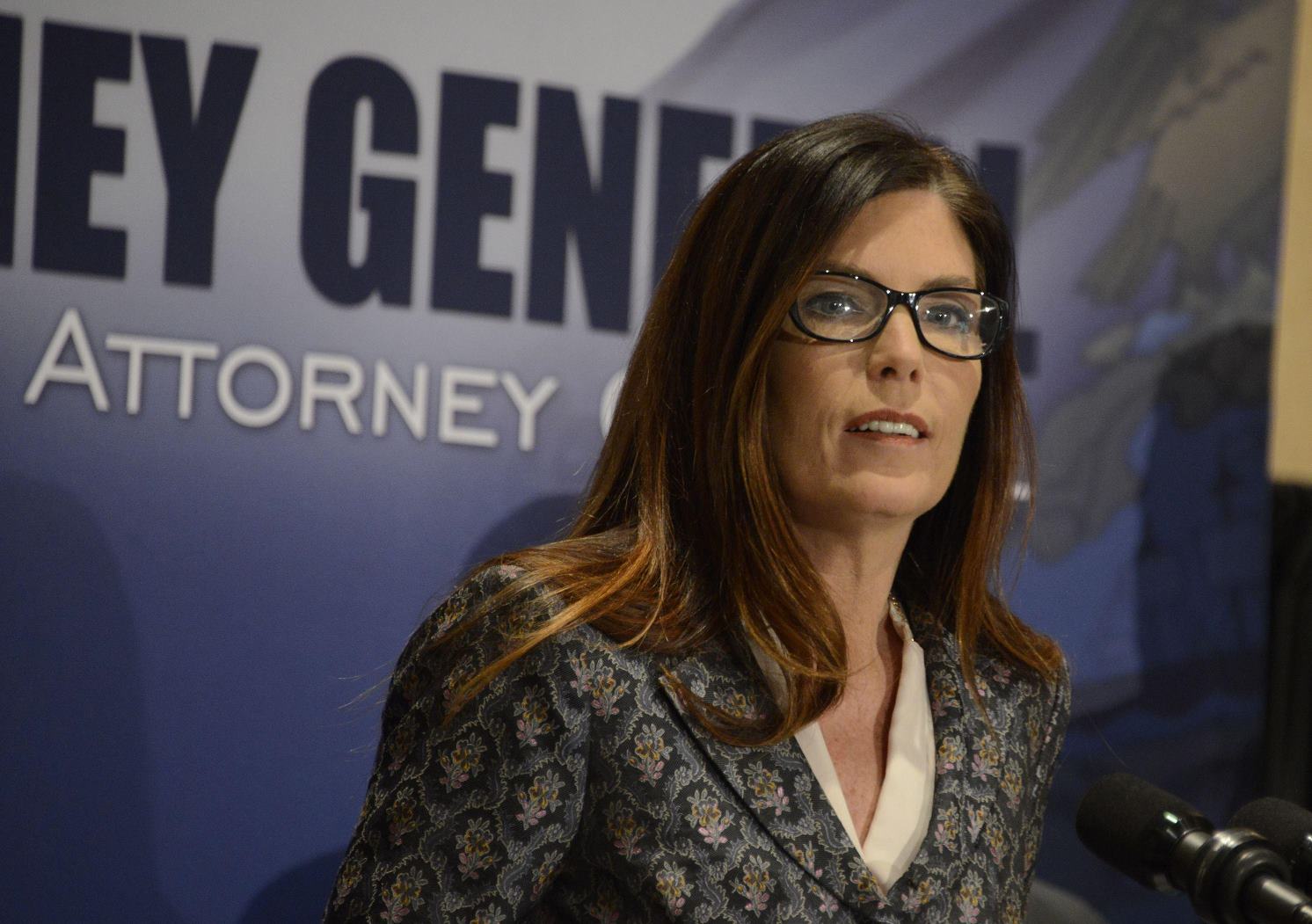|
'Staggering' abuse cover-up in Altoona-Johnstown Catholic diocese, grand jury says
By Peter Smith
[with video] [with pdf] ALTOONA — After the tolling of the noon hour Tuesday at the magnificent domed Cathedral of the Blessed Sacrament, whose towering perch above this historic railroad town reflects the Catholic Church’s long powerful presence in central Pennsylvania, the Rev. Dennis Kurdziel left little doubt for whom the bell tolled. “Pray for the victims,” said Father Kurdziel in a somber noontime Mass, held less than two hours after the release of a state grand jury report finding that hundreds of children were abused by at least 50 priests and others associated with the church in the Diocese of Altoona-Johnstown across nearly half a century. “Pray for your bishop,” added Father Kurdziel, associate pastor of the cathedral. “Pray for your priests. I need your prayers. Ask for God’s help, even on this very ugly day.” And with that, the congregation of several dozen bowed in extended silent prayer before resuming the Mass liturgy. Across town at the Blair County Convention Center, authorities were releasing a catalog of horrors in a 147-page report by the 37th Statewide Investigating Grand jury, which spent nearly two years delving into the case. Hundreds of children were molested, raped and destined to lasting psychological trauma by clerics whose abuses were covered up by their bishops, other superiors and even compliant law-enforcement officials in Blair and Cambria counties, the report said. The conspiracy amounted to “soul murder,” the report said, with abuse happening everywhere from camps and homes to the historic cathedral itself. That description echoes that of similar grand jury probes into the Archdiocese of Philadelphia in 2005 and 2011 that found cardinals and other clerics shifted numerous known abusers from one unsuspecting parish to another. Attorney General Kathleen Kane called it a “day of reckoning” for abusers and their enablers but lamented that no one could be criminally charged. That was because the abuse happened too long ago to be prosecuted under the statute of limitations in effect at that time, or because the perpetrators had died or the victims were too traumatized to testify. But Ms. Kane said the investigation is ongoing and that anyone with information should call 1-888-538-8541. “These findings are both staggering and sobering,” said the grand jury report. “Over many years hundreds of children have fallen victim to child predators wrapped in the authority and integrity of an honorable faith. As wolves disguised as the shepherds themselves — these men stole the innocence of children by sexually preying upon the most innocent and vulnerable .... ” Much of the abuse happened between the 1940s and 1980s, according to the report, but many of the victims came forward in more recent decades to report the priest to the diocese. The two previous bishops leading the diocese — James Hogan, who served from 1966 to 1986 and died in 2005, and Joseph Adamec, who served from 1987 to 2011 and is now retired — “took actions that further endangered children as they placed their desire to avoid public scandal over the well-being of innocent children,” the report said. “Priests were returned to ministry with full knowledge they were child predators.” Bishop Adamec refused to testify to the grand jury, invoking his constitutional right not to testify against himself in a criminal matter, but his lawyer issued a 10-page statement defending his actions and saying the grand jury report omitted key evidence. The Diocese of Altoona-Johnstown issued a statement responding to the report, noting that it had “cooperated fully with authorities throughout the investigation, and will continue to do so as part of our commitment to the safety of all children.” “This is a painful and difficult time in our Diocesan Church,” said the Most Rev. Mark L. Bartchak, bishop of the Diocese of Altoona-Johnstown, who took office in 2011 and who drew favorable comments from the grand jury for his responses to abuse allegations. “I deeply regret any harm that has come to children, and I urge the faithful to join me in praying for all victims of abuse.” The report includes extensive testimony from a key aide to Bishop Hogan, Monsignor Philip Saylor, who said a Blair County president judge, sheriff and other law enforcement officers let the diocese handle abusive priests internally, rather than prosecuting them. The grand jury said there was an apparent reason for this deference — that the diocese had political boss-like powers in central Pennsylvania. Monsignor Saylor said a mayor of Johnstown sent candidates for police and fire chief to him for interviews, and he would tell the mayor whom to pick. “That happened in Johnstown and Altoona,” he said. The grand jury report quoted former Altoona police Chief Peter Starr as crediting his own appointment to such arrangements and saying that the “politicians of Blair County were afraid of Monsignor Saylor,” who was editor of the diocesan newspaper. With such influence, “Hogan saw no obligation of faith or law to the children of his parishioners,” the grand jury report said. The report added that even a diocesan review board, impaneled amid growing public outrage over sexual abuse by priests, often turned into a travesty, with investigations focusing not on the accused but on those reporting abuse by priests. In one case, the review board sought gynecological records of a survivor, the report said. And in another case, a top diocesan official suggested to an abuse victim, himself now a priest, that he could be excommunicated for suing the church — before the official admitted he was reading from an expired canon in church law and that this couldn’t happen. But, the priest said, he felt he was being threatened with hell to intimidate him. The report excoriated Bishop Adamec for the diocese’s 1992 statement regarding the dismissal of a lawsuit involving the Rev. Francis Luddy, whom the diocese knew molested, sodomized and performed oral sex on at least 10 children. The diocese called the dismissed lawsuit “frivolous” even though Bishop Adamec knew “with certainty that Francis Luddy had admitted to molesting the very children for whom the bishop bore the most responsibility.” Bishop Adamec’s attorney, David Berardinelli, filed a 10-page statement with the grand jury defending the retired bishop and calling its criticism ”unfounded.” Mr. Berardinelli said the lawsuit involving Mr. Luddy was dismissed after the accuser’s own brother said in an affidavit the claim was not credible and that Mr. Luddy had already been removed from ministry by that time. He said Bishop Adamec followed a process of meeting with victims, investigating claims and following the advice of psychiatric professionals who evaluated accused priests. It said that five priests who were cleared to return to service never offended afterward and that others were eventually removed from ministry. “While, in hindsight, one might second guess isolated actions taken by Bishop Adamec, there simply is no pattern or practice of putting the church’s image or a priest’s reputation above the protection of children,” his statement said. The grand jury report faulted the psychological reviews as inadequate. Deputy Attorney General Daniel Dye, who had called Bishop Adamec before the grand jury, noted that the bishop refused to make that case to the grand jury when he refused to testify under oath. No alleged abusers are currently in ministry, but some were removed only recently. Ms. Kane said at the time most of the abuse occurred, the statute of limitations for civil lawsuits was two years. It varied for criminal cases but was only a few years at the time of most offenses. The law has been revised several times, and a victim can sue for child sexual abuse as late as age 30 and pursue criminal charges as late as 50 in some cases. The grand jury is recommending the complete removal of statutes for future child sexual abuse criminal cases and opening a window of time allowing civil suits for past abuse, as some other states have done. The grand jury investigation began with a referral by the Cambria County District Attorney’s office to the state Office of the Attorney General regarding alleged abuse at Bishop McCort Catholic High School in Johnstown. The grand jury probe expanded into a sweeping look at abuse dating as far back as the 1940s. In August, investigators executed a search warrant at diocesan offices in Altoona and seized 115,000 documents, many from filing cabinets and safes where the most sensitive church documents were kept. Reports of many of the alleged abusers have appeared in various media over the past two decades, with the grand jury singling out extensive investigations by Johnstown’s Tribune-Democrat in 2002 and 2003. That was in the wake of Boston Globe investigations, recently dramatized in the Oscar-winning movie “Spotlight,” into the shocking levels of abuse and cover-up in the Archdiocese of Boston. That investigation led to revelations of similar cover-ups worldwide and to the U.S. Conference of Catholic Bishops in Dallas mandating on June 14, 2002, the removal of any priest from ministry who committed even a single act of abuse. David Clohessy, national director of the Survivors Network of those Abused by Priests, said reports such as this are “heartbreaking but crucial.” “For decades now, bishops have claimed, ‘We acted badly because we just didn’t know or understand,’” Mr. Clohessy added. “That particular excuse has always rung hollow, but reports like this show precisely why.” One case that occurred right after the 2002 policy change involved the Rev. Martin Cingle, who, according to the grand jury, had groped the genitals of a then-15-year-old boy while sleeping next to the boy on a trip he had taken him on. The victim reported the abuse in late June 2002. Bishop Adamec then met with Father Cingle, who denied remembering such an event, then sent the priest for what the grand jury said was an insufficient psychological review. With the review inconclusive, Bishop Adamec returned the priest to ministry, where he remained until Father Cingle recently admitted to the grand jury under threat of a perjury charge that he had molested the boy. After that, Deputy Attorney General Dye wrote to current Bishop Bartchak, who agreed to his request to remove Father Cingle immediately from ministry. And although the Dallas conference mandated the creation of review boards, the grand jury report noted that as late as 2005, the Altoona-Johnstown diocese was hiring private investigators to look for ways to undercut the credibility of an alleged accuser. Contact: petersmith@post-gazette.com
|
.
Any original material on these pages is copyright © BishopAccountability.org 2004. Reproduce freely with attribution.
